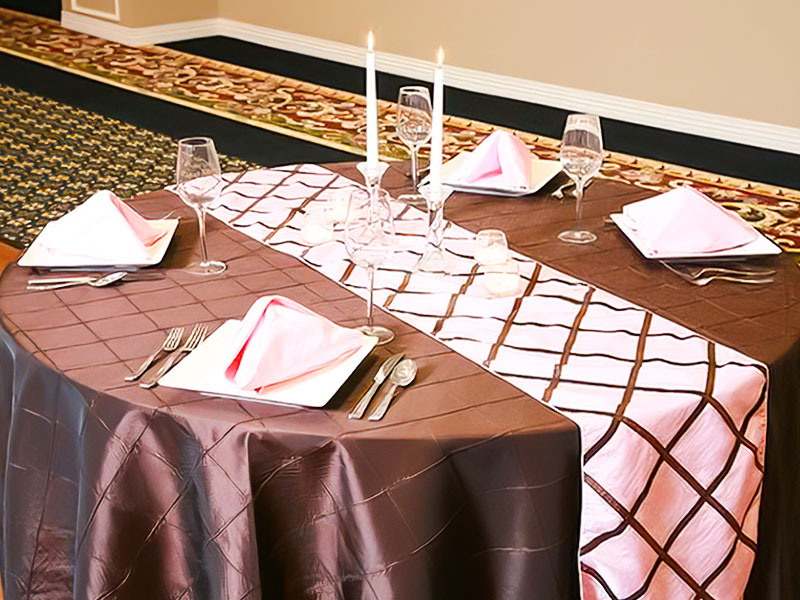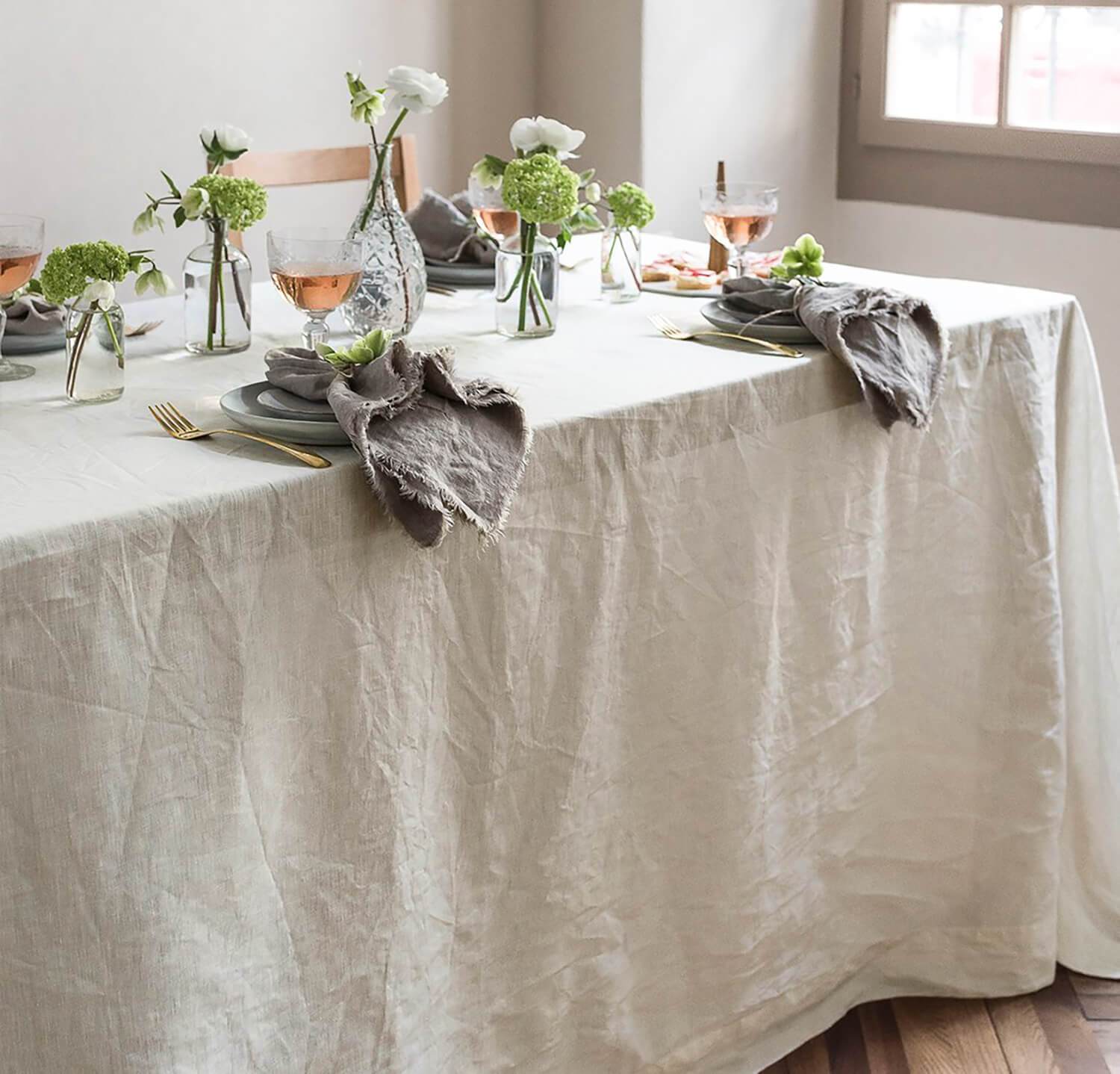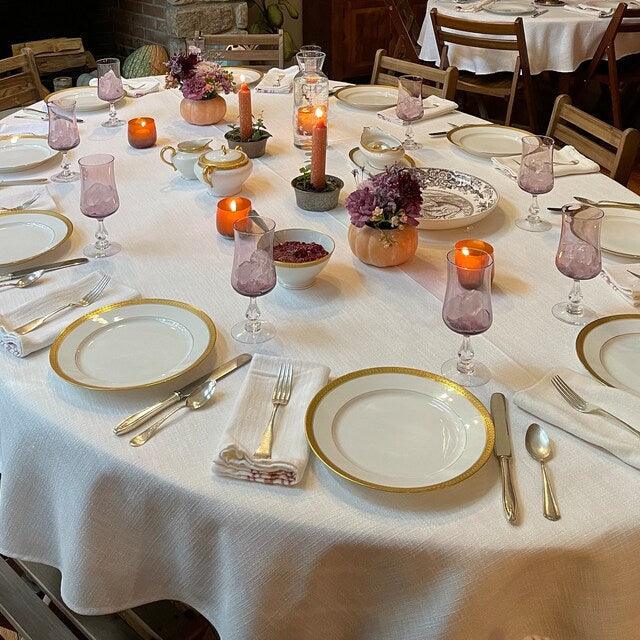Exactly how to Select the Perfect Table Runner for Your Table
Linen Textile Developments: Discovering Modern Trends and Creative Applications in Layout and Textile Industry
From lasting production techniques to advanced weaving technologies, the evolution of bed linen is improving the landscape of the fabric market. As we dive into the realms of creative layout applications and the appearance of bed linen blends and hybrid fabrics, a brand-new phase unravels in which bed linen's function in future textile innovations takes facility phase.
Sustainable Practices in Bed Linen Manufacturing
Sustainable practices in bed linen manufacturing have become increasingly crucial in the fabric market's efforts to decrease ecological impact and advertise honest sourcing methods. Linen, a natural fiber originated from the flax plant, offers a variety of benefits such as biodegradability, breathability, and toughness. However, typical techniques of bed linen production can entail considerable water intake, pesticide usage, and energy-intensive procedures.
To address these difficulties, many fabric manufacturers are embracing sustainable methods throughout the bed linen production procedure. This includes sourcing flax from natural ranches that prevent harmful pesticides and chemicals, applying water-efficient retting techniques to extract fibers from the flax stalks, and making use of green dyes and surfaces. In addition, some firms are purchasing renewable resource sources to power their production facilities and lowering waste through recycling and upcycling efforts.
Technical Advancements in Linen Weaving
With the growing focus on lasting techniques in bed linen manufacturing, the textile market is currently witnessing a surge in technological innovations specifically focused on revolutionizing the art of linen weaving. These developments are reshaping the method bed linen textiles are generated, offering boosted efficiency, quality, and creativity in weaving methods.
One of the essential technical improvements in bed linen weaving is the integration of electronic looms. These sophisticated looms are furnished with software application that enables intricate and complex layouts to be woven with accuracy. By digitizing the weaving procedure, makers can accomplish greater uniformity and accuracy in their bed linen fabrics.
Additionally, innovations in yarn spinning technology have actually made it possible for the manufacturing of finer and more resilient linen yarns - table cloths. This causes softer and smoother bed linen materials that maintain their high quality even after numerous usages and laundries
Additionally, the advancement of eco-friendly dyeing procedures and coatings for linen fabrics is gaining grip. These sustainable methods not just decrease the ecological effect however also satisfy the boosting consumer need for morally created textiles.
Creative Layout Applications for Bed Linen
Ingenious artistic techniques are increasingly forming the creative design applications for bed linen in the fabric market. Bed linen's natural visual allure and capacity to blend with other textiles make it a favorite option for producing one-of-a-kind garments and accessories that cater to the eco aware consumer.
Additionally, developers are experimenting with linen in home decoration, using its breathable and resilient nature to craft elegant furnishings such as curtains, bed linen, and furniture. The appearance and drape of bed linen bring a sense of class and convenience to indoor spaces, adding a touch of elegance to modern homes.

Bed Linen Blends and Hybrid Fabrics

Hybrid materials, on the other hand, take the principle of blending a step even more by incorporating extra components such as metallic strings, recycled products, or conductive fibers. These ingenious textiles not only increase the style possibilities but likewise present functional aspects like conductivity, antimicrobial residential or commercial properties, or boosted toughness. Hybrid fabrics are increasingly being used in various sectors, consisting of fashion, interior decoration, and technological textiles, where the need for multifunctional products is on the rise.
Linen's Function in Future Textile Innovations

In the world of future textile advancements, bed linen is expected to be a crucial player in the development of innovative practical fabrics. Researchers and designers are exploring methods to improve bed linen's intrinsic top qualities with technological innovations, such as integrating wise textiles, nanotechnology, and efficiency finishes. These technologies intend to elevate linen's performance attributes, making it appropriate for a broader variety of applications, from activewear to protective apparel.
Additionally, the mix of linen with various other all-natural or artificial fibers opens up limitless possibilities for producing unique textiles with special residential or commercial properties and performances. By leveraging bed linen's characteristics and checking out cutting-edge blends, the textile sector is positioned to present amazing growths that satisfy progressing customer requirements and sustainability needs.
Final Thought
Finally, the exploration of lasting methods, technological advancements, imaginative layout applications, linen blends, and its function in future fabric developments highlight the continual advancement of bed linen material in the modern style and textile market. With a focus on innovation and creative thinking, the convenience and environmentally friendly nature of bed linen make it a valuable product for suppliers and designers alike, leading the way for more developments and developments in the area of textiles.
As we dig right into the realms of innovative layout applications and the emergence of linen blends and crossbreed textiles, a brand-new chapter unfolds in which linen's role in future textile developments takes center phase.
Discovering the fusion of linen with various other fabrics has led to the appearance of innovative blends and crossbreed textiles in the modern textile industry. Bed linen blends supply a distinct combination of the qualities of bed linen with those of other fibers, resulting in materials that possess boosted buildings such as raised longevity, enhanced draping, and minimized wrinkling.The view it now evolution of bed linen blends and hybrid textiles has established the stage for Linen to play an essential function in driving future fabric advancements.In the realm of future textile developments, linen is expected to be a key gamer in the development of sophisticated functional materials.